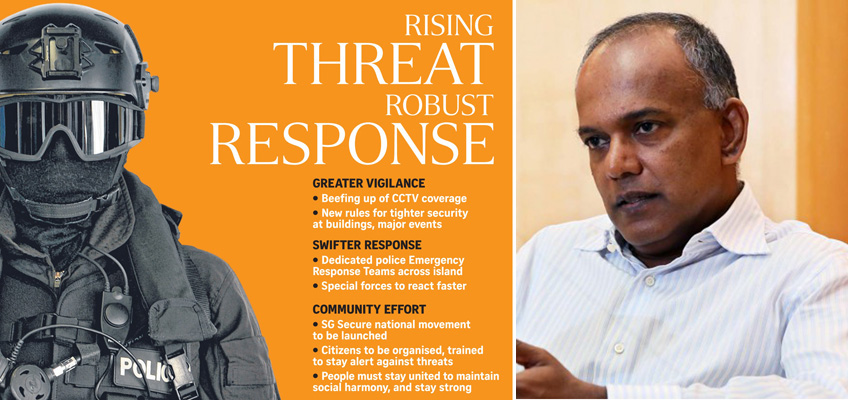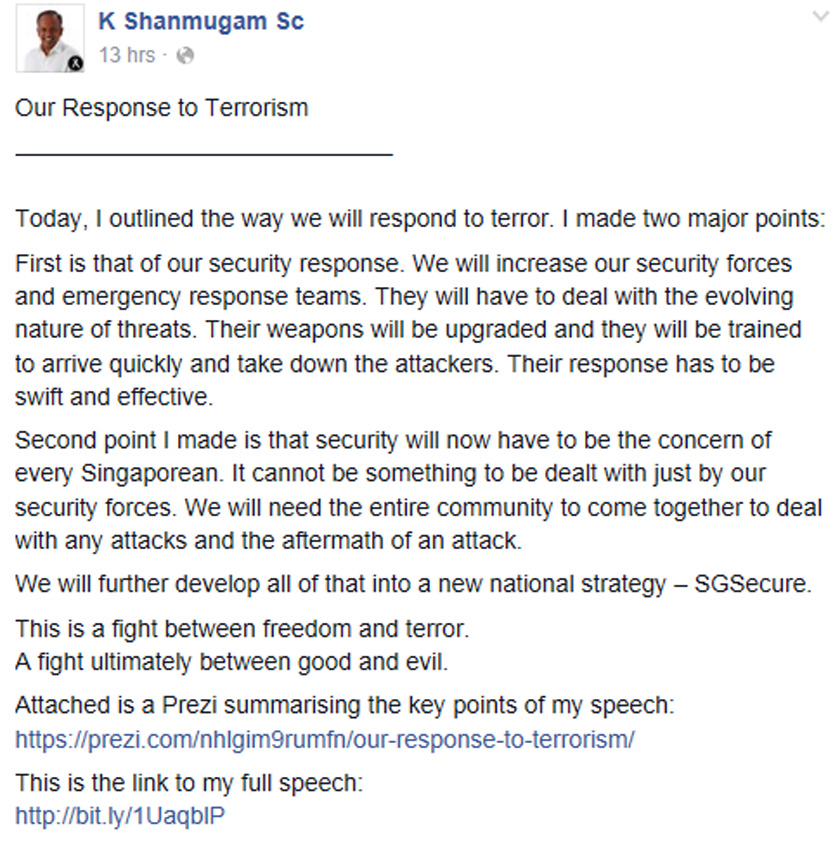A major upgrade of Singapore’s security architecture is in the works, as the threat of a terror attack here reaches its highest level in decades.
The use of police CCTV cameras, already in place at HDB blocks and multi-storey carparks, will be extended to more public spaces, including town and hawker centres and walkways to transport hubs.
Building owners and event organisers may also be required to impose stringent security measures as incidents abroad show that terrorists are taking aim at soft targets.
Emergency response teams of police officers trained in counter-assault skills and armed with more sophisticated weapons will also be formed to react swiftly to attacks.
Significantly, a new national programme called SG Secure will be rolled out to organise and train residents to protect society from attacks and ensure that racial and religious harmony is maintained.
These measures to strengthen defences and, most importantly, Singapore’s social fabric will be put in place over the next few years.
They were outlined yesterday by Home Affairs and Law Minister K. Shanmugam in a speech to top officers from the Home Team, where he noted that the Islamic State in Iraq and Syria (ISIS) terror group poses a grave threat to the region.
And Singapore is a prime target.
“The threat of a terror attack here is at its highest level in recent times, much more so than after 9/11, and the arrest of Jemaah Islamiah members,” he said. “It is no longer a question of whether an attack will take place, but really, when is an attack going to take place. And we have to be prepared for that.”
Mr Shanmugam’s speech came two days after the Home Affairs Ministry announced it had arrested four men – three who took up arms in Yemen’s sectarian conflict, and one who planned to join a Kurdish militia fighting ISIS. Last month, Singapore also deported four Indonesian visitors who had plans to travel to Syria.
Especially troubling is how attacks directed or inspired by ISIS have been carried out – most recently in Paris on Nov 13 last year, and in Jakarta on Jan 14 this year. They involved multiple shooters acting simultaneously in different locations, targeting crowded places where people gather, and seeking to inflict maximum casualties.
An attack on Singapore could also be planned outside the country, just as the Paris attacks were, he noted.
Such developments in the region and beyond have led the Home Team to review its strategies and to start to strengthen them urgently. This will also involve working closely with the private sector and the wider community of residents.
Some new measures will cause inconvenience, he said: “We will all need to get used to more security and bag checks. But I believe our people will understand and accept the need for these measures.”
It is also crucial for society to remain cohesive after an attack. As such, SG Secure must be a “rallying call for Singaporeans from all walks of life to unite, to play a part in making Singapore a safe place.” Residents, workers and community groups will be trained to stay vigilant to prevent an attack, stay united to safeguard the social fabric when an attack happens, and stay strong to help one another recover from it.
Dr Norshahril Saat of Iseas-Yusof Ishak Institute said the steps send a signal that “everyone has a role to play in Singapore’s security. The vast majority of Singaporeans are moderate, and if attacks occur, they must not be quick to target any groups.”
Mr Shanmugam said Singapore must also be able to recover well from an attack: “We have to emerge stronger, more united and more determined as Singaporeans.”

This article was first published on March 19, 2016.
Get a copy of The Straits Times or go to straitstimes.com for more stories.













































